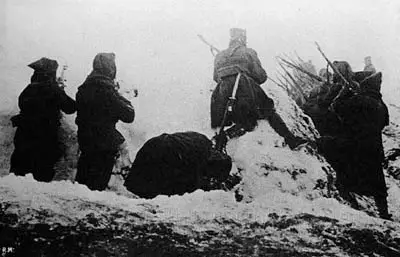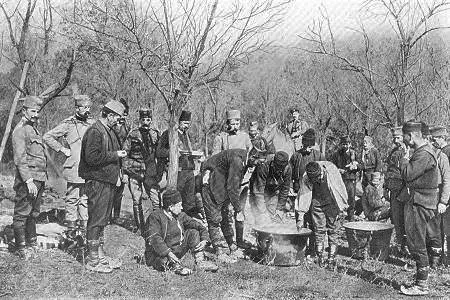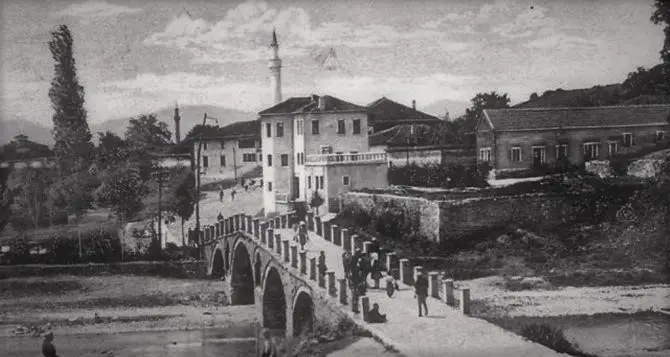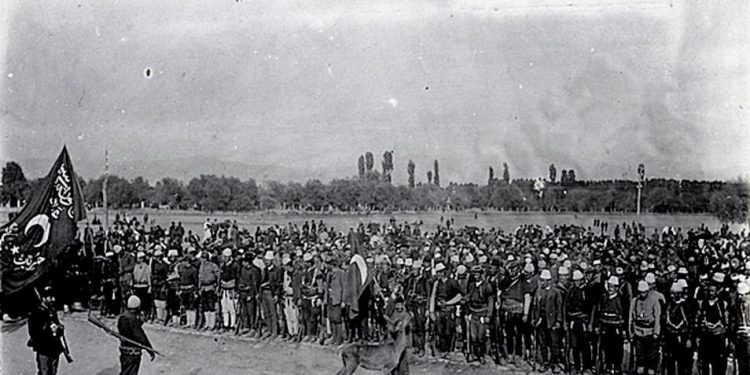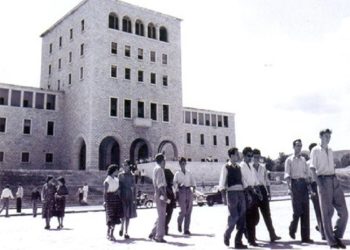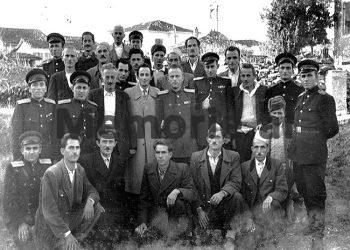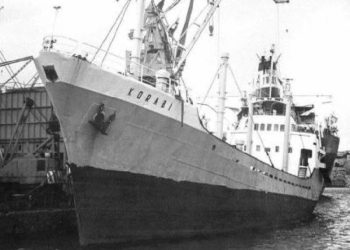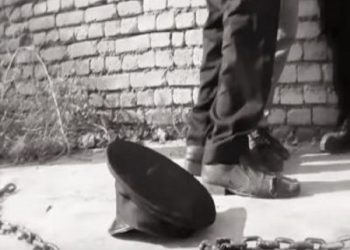From Bashkim Trenova
Part thirteen
INSTEAD OF THE PROLOGUE – A PROJECT, TWO MEMORANDA AND AN ANALYSIS
The Project or Nacertania of Ilia Garasanin – politician, prime minister of Serbia during the years 1852-1853 and 1861-1886:
MYTH-MYSTICISM, VICTIMOMANIA, RACISM AND SERBONOSTALGIA
ALBANIANS ACCORDING TO THE SERBS
Knowledge about the origins of the history of the Slavs is modest and not so clear. Their name appears for the first time in the 6th century AD, when Byzantine writers start talking about the Slavs….”! (Dushan Bataković, Milan St. Protic, Nikola Samardžić, Aleksandër Fotic. History of the Serbian People. L’Age d’Homme. Lausanne. 2005. Pg. 3.)
Continues from last issue
The Turkish invasion and the consequences of the conflict with Christian Europe, especially since the siege of Vienna in 1683, significantly changed the ethnic and demographic picture of this part of Serbia.
Until the 18th century, there were no Albanians (now called Albanians) in the big cities in Kosovo and Metohija. In fact, they began to settle in this region in the 18th and 19th centuries from today’s northern Albania. In addition to the newly settled Albanians (today they are called Albanians), who were mainly Muslims, or who became Muslims immediately after settling in Kosovo, the Islamization of the Serbs also caused major changes in the cultural environment of this region at the beginning of the second half of the 19th century. Turks also settled Circassians in this region.
It was during the Second World War that the most drastic changes occurred in the demographic composition of Kosovo. During the Nazi occupation, a large number of Serbs were killed and expelled from Kosovo and Metohija, on the other hand, the Nazis moved about 100,000 Albanians from Albania to Kosovo.
After World War II, the aggressive chauvinism of the ethnic Albanian minority is responsible for the ethnic cleansing of more than 300,000 Serbs in Kosovo and Metohija. This is why the cultural nature of one of the important centers of Christian civilization has been so radically changed.
Kosovo Albanians have never been victims of ethnic cleansing by Serbs, on the contrary, unfortunately, Kosovo Serbs have been victims of a massive ethnic cleansing carried out by Albanians in the 19th century, (especially in the period 1878 – 1912), under the tutelage of the Turkish rulers, during the Second World War (1941 – 1945) as part of Greater Albania, under the patronage of Fascist Italy and Nazi Germany, as well as after the Second World War, with the gracious support of the communist regime of Yugoslavia Tito. The ethnic cleansing of the Serbs intensified especially after the establishment in 1878 of the Albanian League of Prizren, which openly declared, as its main objective, the creation of Greater Albania.
With the joint action of Christians in the Balkans, this process was stopped with the liberation of Old Serbia and the entire Balkan Peninsula from Turkish rule in 1912. However, it was repeated, more brutally, during World War II.
Contrary to all contemporary truth, the world today is flooded with the “truth” that Serbs are ethnically cleansing Kosovo and Metohija, despite being the great and tragic victims of one of the largest ethnic cleansings in modern history. Europe, it is well known that from the end of the 17th century until 1912, a fierce war took place between Christian Europe and the Ottoman Empire as the champion of the Islamic spirit in Europe, and a militant Islam embodied by the extension of the Ottomans.
From the siege of Vienna in 1683 to 1912, this war was both long and bloody. Nowhere had these fierce conflicts of the European Christian world, on the one hand, and the Islamic-Ottoman world, on the other, erupted with such force, as in Old Serbia and especially in Kosovo and Metohija.
1 – Slavenko Terzic. Le Kosovo et la Metohie dans l’Histoire Serbe. (Kosovo and Metohija in Serbian History). Rastko Graçanica-Peja project. 17. 04. 1999.
It is known that in the first decades and in the middle of the 19th century, Turkey, under the pressure of the great powers, undertook several internal reforms aimed at easing the position of its Christian subjects. The fiercest opponents of these reforms were the Bosnian and Albanian Beylers. (1)
—–
The First Balkan War of 1912-1913 belongs to those historical events which, without reason, were left in the darkness of oblivion. This was probably influenced by the turbulent history of the last decades of the 20th century, as well as a kind of devaluation of the legacy of this war. The liberation of Old Serbia and Macedonia, as well as other unliberated regions of the Balkans, represented a historical and civilizational turning point not only in the history of the Serbian and other Balkan peoples, but, without a doubt, in the history of Europe.
It is not found, for example, until 1912, almost no important Serbian poet, writer or artist, who did not think about the treatment, mainly of the themes and myths of Kosovo, in different genres – drama, epic, song, novel historical/ From 1804 to 1912 there was not a single Serbian statesman or political leader, or even a single political party, that did not have the idea of Kosovo and Old Serbia and their liberation in their political thoughts or political programs. (2)
1 – Slavenko Terzic. Réponse au livre de Noel Malcolm Kosovo-Une brève histoire. Discussion scientifique sur le livre de Noel Malcolm “Kosovo. A Short History” (Macmillan, Londres 1998, 492). 8.10. 1999. Institut d’Histoire de l’Académie serbe des sciences et des arts. Collection d’œuvres.Volume 18. Belgrade 2000.
2 – Slavenko Terzic: Oslobodenje Stare Serbia 1912 building. (Libération d’anciènne Serbie en 1912. – Liberation of Old Serbia in 1912). Nemanja. 27. 03. 2013. Page 1.
From the time of the Albanian League (1878-1881) until today, in certain influential circles in Europe and the USA, a strong anti-Slavic tendency is expressed. On the other hand, the Albanians are very capable of presenting themselves as an obstacle to the supposed Pan-Slavism in South-Eastern Europe. The Albanian writer Ismail Kadare claims that “Kosovo is a place where the Slavic conquest was interrupted at the beginning of the middle Ages”, where the pan-Slavic dream was thwarted: the conquest and subjugation of the main European peninsula. Unlike Germany, Turkey or Austria, whose attitudes reveal revenge against Serbia and the Serbs, the United States considers the Serbian issue within the broad framework of its policy from the Baltic to the Mediterranean.
The target is Russia first and, within the framework of this strategy, the Middle East and Central Asia. It is interesting that the Albanians never agreed to enter into an alliance with other Balkan nations in the war against Turkey. They are still an outstretched hand to some of the great powers that want to rule the Balkans. They now believe that the time has come to create a “Greater Albania” and they have the support of the West.
They emphasize the so-called “Illyrian-Albanian identity” historical and ethnic since ancient Dardania, Serbia must insist in every case and everywhere that Kosovo and Metohia is an inalienable part of Serbia. It has never been an “Albanian province”, in this province, not Albanians, but Serbs and other Slavs were the majority.
In 1912, Serbia did not go to war against the Arbanians, but together with the Christians of the Balkans, it fought for liberation from the Ottoman Empire. The Albanians, being part of the Ottoman troops, fought fanatically against the Balkan Christians until the end of the war. Historian HD Shanderl believes that initially Britain played a leading role in organizing the Albanian national movement. In April 1880, Lord Edmond Fitzmaurice declared that it was in Europe’s interest to create a “strong Albania”, which would include the provinces of Shkodra, Ioannina, Kosovo and Manastir, under the sovereignty of the sultan. This role was later taken over by Austria-Hungary.
This is the policy of the West and the USA today, the policy of creating a “strong Albania”, in fact “Greater Albania”. The so-called free and democratic world is not at all interested in the means used by the Albanian separatist movement in Kosovo and Metohija – from individual crimes and ethnic cleansing to terrorist actions. The platform for the solution of the Albanian national question of the Academy of Sciences of Albania in Tirana on October 20, 1998, builds, among other things, a kind of “historical Kosovo” which, in addition to current Kosovo and Metohija, includes the Vranja valley; which it calls “Eastern Kosovo”, – the Skopje region (“Southern Kosovo”), and parts of Montenegro called “Western Kosovo”.
The seat of such a Kosovo, which was simply created as a region, had to be in Skopje, since it was the seat of the former province of Dardania. Today’s policy of the main countries of the EU and the United States towards the Serbs and Southeast Europe is very reminiscent of Friedrich Naumann’s 1915 concept of a Greater Central Europe, as well as some ideas of the Greater German Reich. (1)
****
Slobodan Jovanović – President of the Council of Ministers of the Kingdom of Yugoslavia, president of the Royal Serbian Academy, Rector of the University of Belgrade.
After the annexation crisis, one of Austria’s most comfortable political men, Bernreither, arrives in Belgrade to discuss the terms of a Serbian-Austrian agreement. He would guarantee that Austria was willing to secure the borders we had and, perhaps, secure us a favorable trade agreement, but that she could not support our territorial expansion. We had to remain a “little Serbia”, stuck between Austria and Bulgaria, landlocked, without economic independence, having only a formal independence.
(1) Serbs also, uniting their forces, must defend what is theirs. But the Serbs would be wrong to think that their duty is only to protect Serbism. It is also up to them to worry about the state as a whole. (2)
****
1 – Slavenko Terzic. Osveta porazenih. (La revanche des vaincus – Revenge of the vanquished). Voice of the public. Gracanica online. Info. 20. 08. 2019.
Svetlana Velmar Jankovic – novelist, essayist, chronicler…:
Kosovo is certainly the heart of our historical past and our merciless present, our greatest myth, which we only recall when it is discussed again. The saga of Kosovo is proof of our generous sacrifice during the First and Second Balkan Wars at the beginning of the 20th century, and of our selfish indifference during the dark period of the third or fourth settlement of the Balkan-Yugoslav accounts – at the end of the same century. (3)
****
Vladan Gjorgjevic – writer, politician, prime minister of Serbia during the years 1897-1900:
1 – Slobodan Jovanovic, Sur l’idée yougoslave : Passé et avenir (1939) – On the Yugoslav idea : Past and future (1939), – Balcanica XXXIX (2008). Pg. 296.
2 – Right there. Pg. 297-298.
3-Svetlana Velmar Jankovic – Kosovo. SERBIA. October 2017.
The Albanians resemble not only the Phoenicians, but also the people of prehistoric times, those people who, out of fear of wild animals, slept on trees where, in order not to fall, they HOLD ON WITH THEIR TAILS.
In the thousands of years that have passed since then, the human tail has been used less and less, this organ of the human body has become smaller and smaller until, at last, in historical times, there remains one it is small at the end of the summer. Only among the Albanians it seems that, until the 19th century, there were also people with tails. (40).
They are two-faced, with a small horse’s tail and a goat’s tail; they are very strong people and especially very stable pedestrians.
Today’s Albanian is a mixture of different languages, a soup of languages, which can perhaps be more closely compared to Juvenile, Albanians do not have any national type, they do not have any common national language, they do not have any history national, they have never formed a national state, nor have they tried to have one, the Albanians are wild tribes that cannot be tamed so easily and that neither God knows what belongs to him, nor Caesar what is his right. 1)
—
Savages, that have no history; they sleep in trees to which they are attached by their tails; divide these unruly people between Serbia, Greece and Montenegro; The Arnauts are bloodthirsty, animal-like, and so incomparably ignorant that they don’t know the difference between sugar and snow. (2)
——
1 – Quoted by Sylejman Salihu in: Essay on Vladan Gjorgjevic’s book “Arnauti i velike sile” (Arnauts and great powers), World Today. 5. 05. 2021.
2 – Vladan Gjorgjevic “Arnauti i velike sile” (Arnauts and great powers), news24. com/2021/12/.
****
Vojislav Pavlović – researcher at the Institute of History of the Serbian Academy of Sciences and Arts, professor at the University of Belgrade, etc.:
The struggle for the liberation of the Serbs living in the Ottoman Empire was the foundation on which Serbian national identity was built between 1880 and 1912. The national action, undertaken in Macedonia, Kosovo and Serbia, took the notion of Serbian national identity out of the ministerial cabinets, thus overcoming the framework of the Belgrade elites and allowing the majority of Serbs to adopt it. (1)
After only one year of peace, Serbia found itself at war again at the end of July 1914; the European fire came too soon. The fruits of the victories in the Balkan Wars could not be consolidated within a year; the country was militarily and economically exhausted. Now, this new war in the Balkans, at least for a year, had all the features of a third Balkan war. All the nations of the Balkans and Southeastern Europe saw in the world war the chance to complete their national integration, begun during the Balkan wars. (2)
—
Sazonov specifies the content of the reparations that will be given to Serbia during the talks, which should convince Italy to enter the war on the side of the allies. From the first contact, on August 5, with the Italian ambassador, Marquis Carlotti, Sazonov offered him Trentino, Trieste and Vlora, as well as dominion over the Adriatic Sea, while he envisioned an outlet to the Adriatic for Serbia and Greece. In this way the old Serbian demand to have an outlet to the sea was fulfilled, the Danube-Adriatic railway project had the unconditional support of the Entente. But a new obstacle appeared; the Albanian national movement supported by Austria-Hungary.
The defenders of an Albanian movement appeared as early as 1878 with the creation of the Albanian League of Prizren. However, it was the emergence of the Young Turks that really sparked an explosive national enthusiasm in Albania and Kosovo. The end of the centuries-old Ottoman regime, the parliamentary elections pushed the Albanians to formulate their national demands. There was an obvious difference of views between the South, on the one hand, and Northern Albania and Kosovo on the other. These last two regions were more settled and traditional. The pan-Turkish ideas of the new Turkish regime were fought there with force. The quest for autonomy was aimed at preserving the traditional structures of their society.
For the same reasons, the European reform project as well as the Serbian railway project was not accepted. The Adriatic railway presented a particular problem, because it raised the issue of relations between Serbs and Kosovo Albanians and a larger issue, that of the future of the region, Albanian opposition was the main obstacle to the Adriatic project. Milanovic and the Serbian government would try to establish links with the clans of Kosovo and Northern Albania during the Albanian uprisings of 1910-1912.
1 – Vojislav Pavlovic. La mémoire et l’identité nationale: the memory of the great war in Serbia. World wars and contemporary conflicts. Cairn 2007/4 (no. 228), p. 51.
2 – Vojislav Pavlovic. La Troisième guerre balkanique. Balkanica XXXVIII, 2008. Pg. 191.
—
1-Vojislav Pavlović. La Troisième guerre balkanique. Balkanica XXXVIII, 2008. Pg. 194.
2 – Vojislav G. Pavlovic. La France et l’espace youugoslaves : la naissance de la Yougoslavie (1878-1918) – France and the Yugoslav space; the birth of Yugoslavia (1878-1918). – Balkanološki institute SANU, 1 Jan. 2015. Pg. 137.
The sending of arms and money had a threefold purpose. It was also a means of gaining their trust to finally get their approval for the Adriatic project as well as an annexation of the region by Serbia. But for the Albanian clans, the Serbian proposals were never a serious alternative. The Baylers of Kosovo did not want autonomy within the framework of Serbia.
They wanted to keep all the privileges they had until then, and even increase them by taking absolute control of the regions forming Greater Albania. Since the end of the Bosnian crisis, Milanovic denounced the Austro-Hungarian Greater Albania project in front of European diplomats, explaining that Greater Albania was nothing more than an advanced trench of Austria-Hungary, whose objective was the final control of the Balkans. . (1) Memorie.al
The next issue follows







